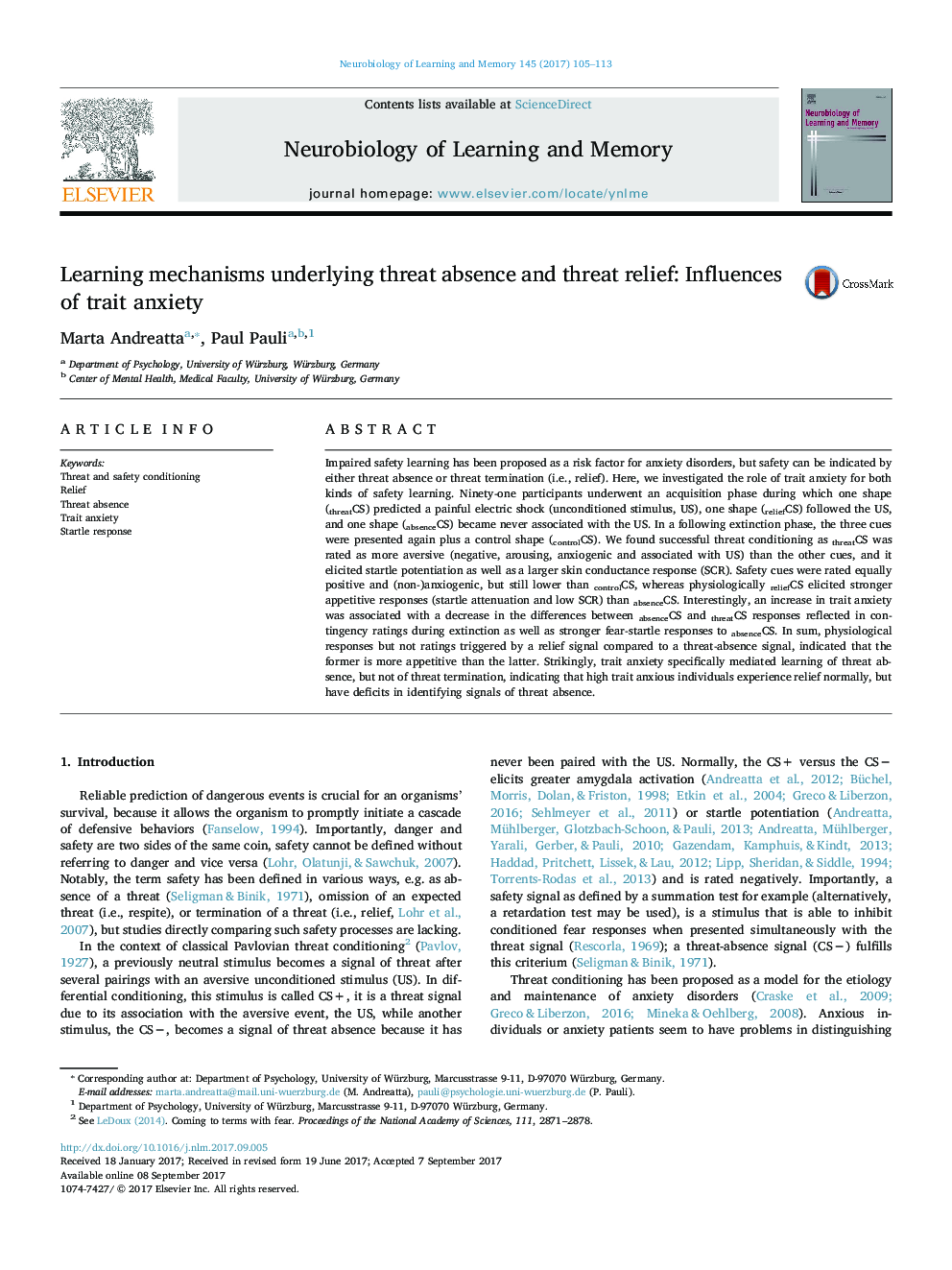| کد مقاله | کد نشریه | سال انتشار | مقاله انگلیسی | نسخه تمام متن |
|---|---|---|---|---|
| 5043089 | 1475128 | 2017 | 9 صفحه PDF | دانلود رایگان |
- Threat absence and threat relief cues become safety signals.
- Threat absence and threat relief induce distinct learning processes.
- Threat relief versus threat absence cues elicit stronger appetitive conditioned responses.
- High anxious individuals show deficits in identifying threat absence.
Impaired safety learning has been proposed as a risk factor for anxiety disorders, but safety can be indicated by either threat absence or threat termination (i.e., relief). Here, we investigated the role of trait anxiety for both kinds of safety learning. Ninety-one participants underwent an acquisition phase during which one shape (threatCS) predicted a painful electric shock (unconditioned stimulus, US), one shape (reliefCS) followed the US, and one shape (absenceCS) became never associated with the US. In a following extinction phase, the three cues were presented again plus a control shape (controlCS). We found successful threat conditioning as threatCS was rated as more aversive (negative, arousing, anxiogenic and associated with US) than the other cues, and it elicited startle potentiation as well as a larger skin conductance response (SCR). Safety cues were rated equally positive and (non-)anxiogenic, but still lower than controlCS, whereas physiologically reliefCS elicited stronger appetitive responses (startle attenuation and low SCR) than absenceCS. Interestingly, an increase in trait anxiety was associated with a decrease in the differences between absenceCS and threatCS responses reflected in contingency ratings during extinction as well as stronger fear-startle responses to absenceCS. In sum, physiological responses but not ratings triggered by a relief signal compared to a threat-absence signal, indicated that the former is more appetitive than the latter. Strikingly, trait anxiety specifically mediated learning of threat absence, but not of threat termination, indicating that high trait anxious individuals experience relief normally, but have deficits in identifying signals of threat absence.
95
Journal: Neurobiology of Learning and Memory - Volume 145, November 2017, Pages 105-113
